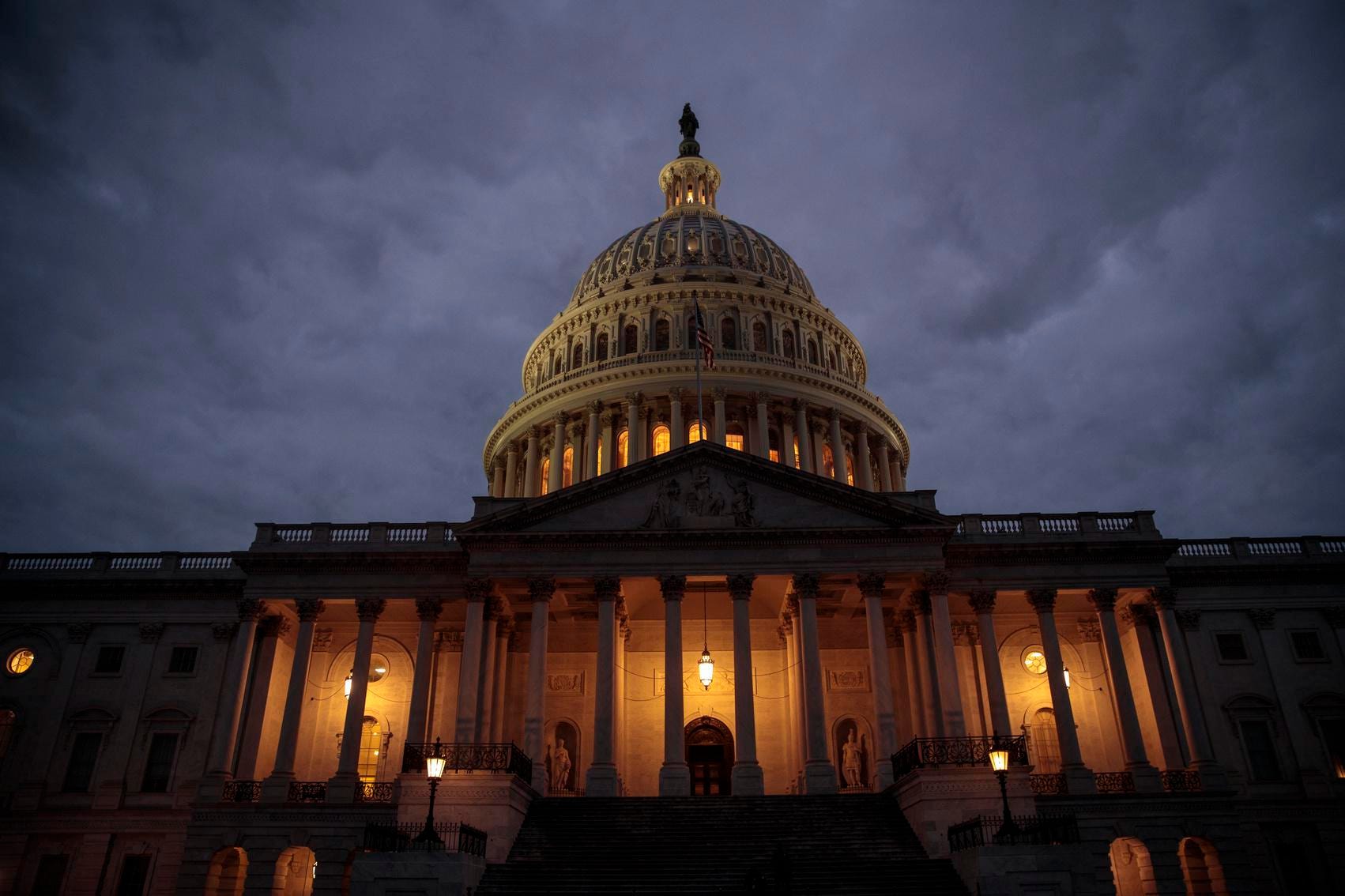
The U.S. Capitol is seen at dusk, January 21, 2018 in Washington, D.C. (Photo by Drew Angerer/Getty … [+]
It takes two days to settle a trade in 2022. It takes two weeks (or more) to settle an election. As the country and market waits for the topline results of the midterms, it’s not too early to look towards next year’s “secret” policy world for potential legislative impacts on the bottom line.
Midterms Postmortem: 2022 Was An Election Of Abnormalities
America was experiencing lingering effects of a once-in-a-century pandemic, spiking inflation with fears of a contracting economy, labor unrest, and the rise of political extremism. Voters wanted a “return to normalcy.” This wasn’t just 2022, or 2020 for that matter. It was 1920. Then-Senator Warren Harding (R-Ohio) ran a presidential campaign on the promise of “normalcy” and “restoration” after a world war, the Spanish Flu, inflation, recession, labor riots, and the resurgence of the Ku Klux Klan.
This return to normalcy has become a common theme in American elections. Voters are “thermostatic” in nature—if they perceive extremes from the left or right, they look to counteract it at the ballot box. A century after the 1920s election and voters again are confronted with a desire for normalcy.
What abnormalities went against President Joe Biden and Democrats in control of Congress? Economically, there was the highest inflation in 40 years, the lowest levels in consumer confidence in over 40 years, and a sharp drop in real disposable income. It’s no wonder why a majority of Americans think the country is in a recession, despite the still strong jobs market.
The pandemic is no longer top of mind for most voters, but it’s less a declaration of victory and more a lingering malaise of its non-health consequences. Certain crime remains elevated, drug overdoses continue to be at crisis levels, and math and reading scores of students plummeted. The perennial issue of immigration also remains a potent force, with US-Mexico border crossings at an all-time high.
MORE FOR YOU
But the abnormalities of 2022 did not just go against the Democrats. A conservative Supreme Court overturned almost 50 years of abortion precedent from Roe v. Wade earlier this year, with several Republican-led states further restricting or outlawing abortions.
The 2020 presidential election loser remained front-and-center in the Republican Party. President Donald Trump’s staying power kept investigations of the January 6 insurrection and other Trump-related inquiries relevant for voters. His imprint on Republican primaries elevated candidates with little to no governing experience.
In the end, the Democratic abnormalities outweighed the Republican ones. Inflation was the most important issue for voters and Republicans are on track to win the national popular vote by a few points. Yet these partisan differences in abnormalities ended up being far less than expected. Democrats won the critical vote of independents, are in a good position to hold the Senate, and will suffer the fewest losses in House seats since 2002 (although still likely losing the House majority).
Americans want a return to normalcy but they gave a conflicting narrative about which party is better to provide that return and how. That leaves an ambiguous mandate for lawmakers moving forward.
A Muddled Election Leaves Monetary Policy As Markets Headliner
Even before the muddled midterms, markets were less focused on the machinations of Congress and the White House and more on what’s going to happen at the Federal Reserve. Monetary policy is the headliner out of Washington, D.C., and the markets are looking to see if fiscal policy will help or impede on the Fed’s job of beating back inflation.
It’s why the big market move this week wasn’t from the elections but a milder Consumer Price Index reading that spawned hope (or delusion) of the Federal Reserve soon easing up on its historic tightening.
The supporting role fiscal policy does play could be helpful. The saying goes, “Wall Street loves gridlock.” There’s some truth to that. The S&P 500 has performed better historically in divided government. Since 1950, there hasn’t been one negative return for the market in the 12 months after a midterm election. The theory goes that post-election creates more certainty and divided government means less legislation can pass. This creates less policy risks and thus less volatility for markets. A divided government next year isn’t going to pass a progressive spending agenda that changes the downward trajectory of deficits and forces the Fed to raise rates further.
In reality, the 118th Congress next year is not where political leaders will reap their legislative legacies. If Republicans win back the House, it’s where they plant the policy seeds with messaging bills on items like curbing IRS funding, fighting back against ESG investing, and increasing fossil fuel production. Political parties are more cohesive and ideologically aligned, so even a Republican conference with a narrow majority could likely pass these bills through the House. Of course, these bills won’t pass the Senate where a 60-vote supermajority is required to overcome the filibuster. But the seeds planted next year become the laws and regulations come 2025 if Republicans control the White House and Congress.
There’s Unity Amid Division That Can Still Impact Markets
The secret of partisan Washington, D.C. is that most major legislation passing each year is done so on a bipartisan basis. Things get done in a divided government, it just may not generate headlines.
It’s what Simon Bazelon and Matthew Yglesias coined the “Secret Congress.” There are some issues that don’t stir up partisan rancor, allowing progress to be made under the radar. Even some high-profile bipartisan efforts have a short shelf life in the political zeitgeist. Less than a quarter of voters know that Congress last year passed the $1.2 trillion Infrastructure Investment and Jobs Act. The bipartisan legislation included some of the largest investments ever in areas like public transit, bridge construction, and broadband deployment.
Today, there are plenty of policy issues that go under the radar and don’t divide along traditional lines of Republican vs. Democrat. All can have meaningful impacts for various industries.
Both parties are becoming more hawkish towards China, with bipartisan support for screening outbound investments into foreign countries and strengthening ties with Taiwan. Republicans and Democrats continue to view crypto policy as a bipartisan partnership worth further developing, especially in the aftermath of FTX’s collapse. Permitting reform has an interest from both parties as a way to help speed up domestic energy production. Data privacy legislation has a bipartisan alliance that will continue to push for action in the next Congress. The telehealth industry has found broad congressional support for its acceptance and expansion in the healthcare space.
Of course, there’s always tax policy. Beyond major partisan fights over rates, tax lobbying creates bipartisan alliances for certain industries. Especially with a potential economic slowdown looming, bipartisan calls will only increase to provide tax relief for housing, corporate R&D, and gig economy workers.
While all these bipartisan endeavors aren’t guaranteed to pass into law, the legislative wheels are in motion regardless of how the midterm results pan out.







